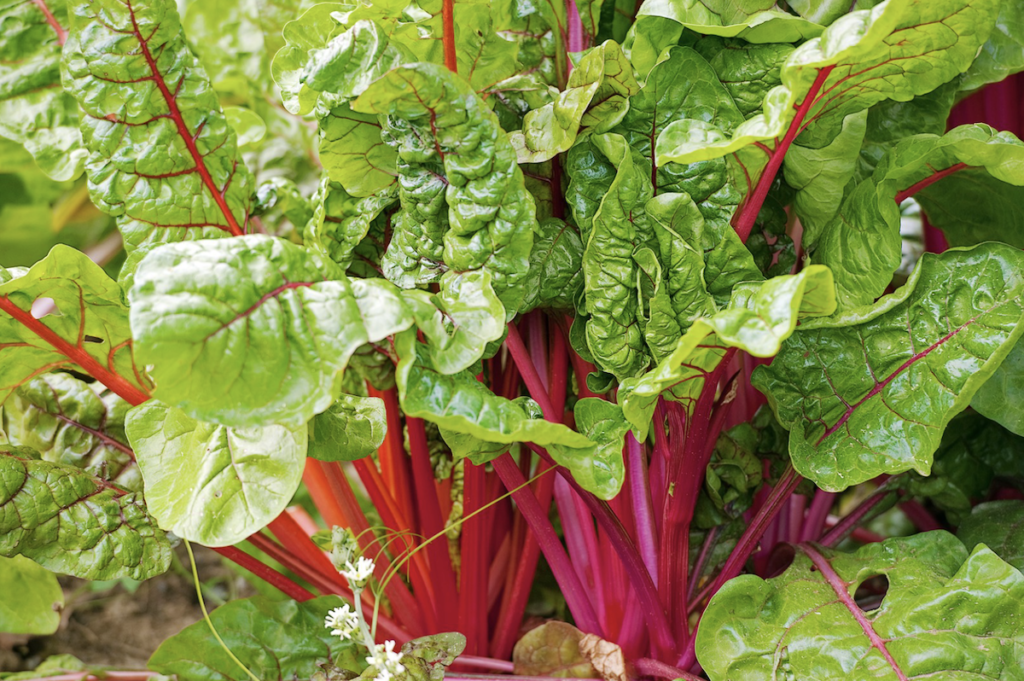By Rachael Leverton
Super Swiss Chard
March means the start of outdoor sowing season in the UK, as the days begin to lengthen and become warmer. I discovered Swiss Chard several years ago when I was looking for something more inter-esting than spinach. It’s rarely found in the super-markets for some reason and is quite delicious. It’s also easy to grow and doesn’t require much maintenance.
Beta vulgaris subsp. cicla var. flavescens is some-times called Rainbow Chard because of its ornamental stems. The fact it’s so decorative, with its large fleshy dark green leaves and bright stalks in shades of red, purple, gold and white make it a good choice for a small garden. It looks attractive in containers or borders.
To grow it, choose a sunny (but not sun-baked) spot, prepare the soil well (or use com-post in a large container), make shallow drills about 40cm apart and sow the chard seeds thinly, approximately 1.5cm deep. Cover the seeds with soil and water well. You can start sowing in March, then every few weeks you can repeat sow, until September for a continu-ous crop that will even see you through the winter if you give it a little protection. I move my pots to the greenhouse.
As the seedlings begin to grow, thin out the plants so that they’re 25-30cm apart. Water well after thinning. Chard is an easy vegetable to look after but keep an eye open for slugs and snails. Birds also seem to like the little seedlings (at least in my garden) so you might need to protect them.
Young chard leaves can be eaten fresh so use the early thinned leaves for salads. The adult chard leaves are ready to harvest about 10-12 weeks after sowing, though later in the year it will take a little longer. It’s a wonderful cut-and-come-again plant. Cut individual leaves as you need them, and the plant will keep producing new growth.
Swiss chard varieties to try
My favourite variety is ‘Bright Lights’ which has rainbow-coloured stems. It’s particularly good for autumn crops. ‘Fantasy’ has pretty red stems and is good if your garden tends to be damp as it’s resistant to mildew. As its name suggests ‘Bright Yellow’ has yellow stalks and is very striking.
All three of these varieties can be over-wintered with a little protection and provide you with an early crop the following spring.
Happy Gardening,

